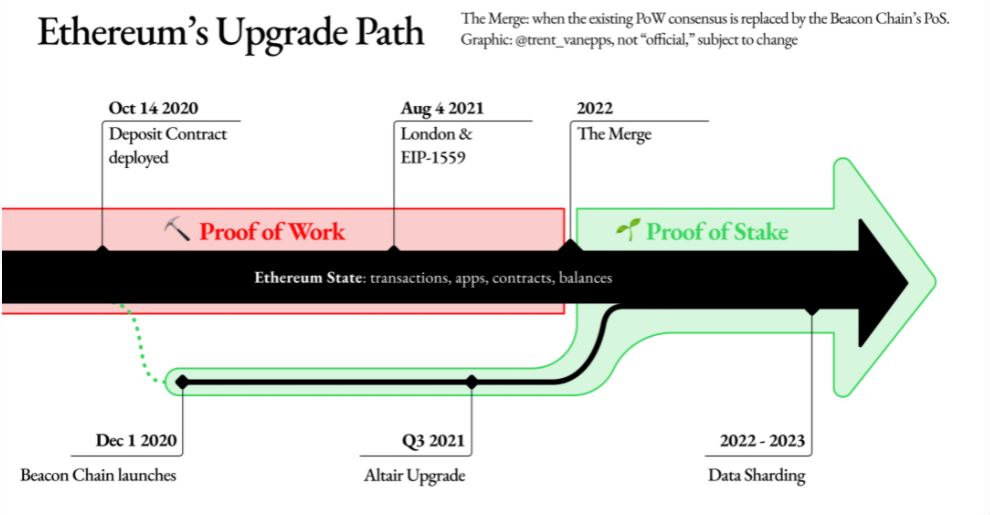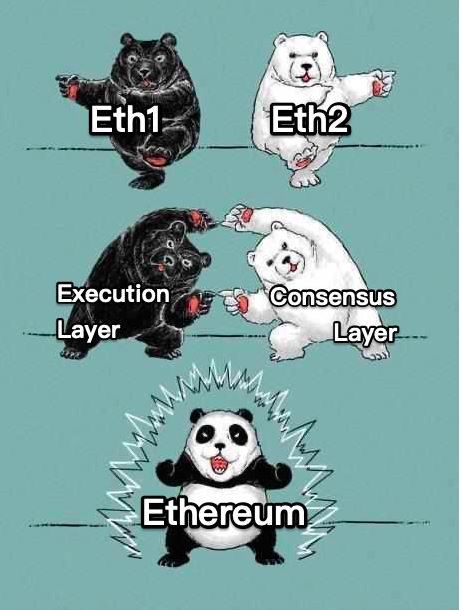Ethereum Foundation Rebrands ETH 2.0 to ‘Consensus Layer’

Ethereum developers have moved away from old terminology and opted to phase out the terms ‘ETH1’ and ‘ETH2’ and pretty much everything related to them in what the foundation calls “the Great ETH2 Renaming“.
Ethereum.org is shifting much of its fundamental terminology to reflect the integration of ETH1 – the existing Proof-of-Work (PoW) chain – which will now be called the “Execution layer”, to ETH2 – the new Proof-of-Stake (PoS) chain – now known as the “Consensus layer”, making the chain greener and faster.
In late 2020, Ethereum Foundation developer and researcher Danny Ryan showed how ETH1 and ETH2 are layers in the Ethereum stack, and how they can work together to make the migration to PoS faster.
The bottom line is that the execution layer will act as an engine where all the smart contracts and network rules reside, driving user interaction, while the consensus layer ensures all the devices contributing to the network are acting in line with the rules. This means that Ethereum can move to PoS without having to abandon the current network. In essence, ETH1 (Execution layer) + ETH2 (Consensus layer) = Ethereum.
However, no changes will be made to the roadmap, with Proof-of-Stake and sharding still in the pipeline for 2022/2023.

Reasons for the Rebranding
According to the announcement, in late 2021 developers stopped using the ETH1 and ETH2 terms to address possible confusion for users. One of the major problems was that the previous terminology showed a continuum of iterations rather than stacks working together. Thus the foundation has decided it wants to “be understood by the broadest audience possible”:
By removing ETH2 terminology, we save all future users from navigating this confusing mental model.
Ethereum.org
Additionally, this also helps in scam prevention since some swindlers would try to use the ETH2 misnomer to scam users by having them swap their ETH for ‘ETH2’ tokens.







